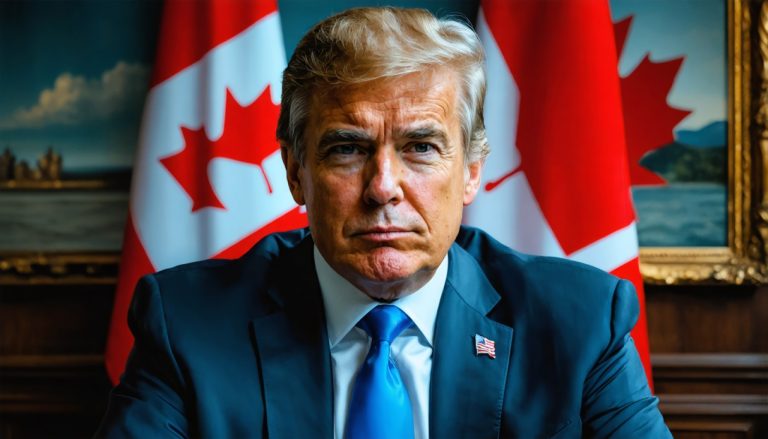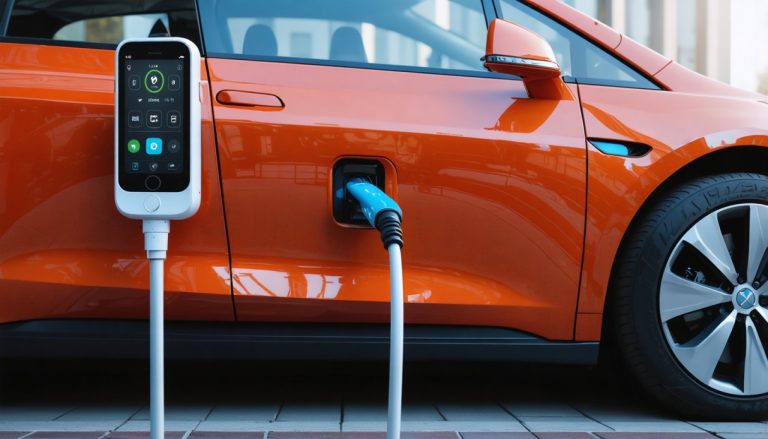
- Trump suspends a $5 billion initiative to expand EV charging networks in the U.S., causing market turmoil.
- Major EV stocks face sharp declines amid uncertainties surrounding electric vehicle growth.
- Industry leaders are concerned about the potential impact on electric mobility and infrastructure development.
- Investor sentiment has shifted, highlighting the critical need for government support in sustainable technologies.
- The move raises questions about the future of electric vehicle adoption and the ongoing transition to greener transportation solutions.
- All eyes are on upcoming developments that could define the future trajectory of the EV industry.
In a dramatic twist for the electric vehicle landscape, former President Trump has put the brakes on a crucial $5 billion initiative designed to enhance the electric vehicle charging network across the United States. This bold suspension, originating from the Biden administration, has sent shockwaves through the market, leaving major EV charging stocks like Tesla (TSLA), Blink Charging (BLNK), and EVgo (EVGO) spiraling downwards.
The decision has raised questions about the future of electric mobility in America, as industry leaders grapple with the implications of halting a key expansion of charging infrastructure. Investors and enthusiasts alike are left pondering the potential setbacks in the race toward a greener future. With electric vehicle adoption soaring, the need for robust charging solutions has never been more crucial.
Stock prices reacted swiftly, reflecting a deeper concern about the viability of electric vehicle growth amid policy uncertainties. Industry analysts are closely monitoring these developments, emphasizing the importance of government support for sustainable technologies.
As electric vehicles promise cleaner, more efficient transportation, this shocking reversal has sparked urgent conversations about the balance between politics and progress. Will the drive for a sustainable future endure this setback?
The takeaway here is clear: as the electric vehicle revolution accelerates, so too does the need for a cohesive strategy that supports infrastructure development. Keep your eyes peeled for how this pivotal moment unfolds in the coming months—it’s a defining moment for the EV industry!
Shocking Setback for Electric Vehicles: What It Means for the Future
The Current Landscape of Electric Vehicle Charging Infrastructure
The recent decision by former President Trump to suspend a $5 billion initiative aimed at improving the electric vehicle (EV) charging network has sent ripples through the industry. Major players in the EV charging space, such as Tesla, Blink Charging, and EVgo, experienced significant stock drop-offs as investors react to the uncertainty surrounding government support for this crucial infrastructure.
Key Insights into the EV Infrastructure Crisis
– Market Impact: The stock decline among major EV charging companies signals deep-seated concerns regarding the industry’s future without robust government backing. Analysts are predicting that sustained investment is critical not just for individual companies, but for the entire ecosystem surrounding electric vehicles.
– Charging Infrastructure Trends: Current trends indicate that electric vehicle adoption rates are on the rise, with more consumers willing to transition to EVs. However, without a complementary expansion of charging stations, this growth could stagnate. The lack of infrastructure could lead to “range anxiety” among potential EV buyers, which may inhibit sales.
– Political Implications: This decision has reignited discussions about the interplay between politics and sustainability. With environmental policies often shifting with different administrations, the EV industry faces an uncertain future that could impede long-term strategic planning and investments.
Important Questions Regarding the Electric Vehicle Charging Network
1. What are the consequences of halting the $5 billion plan for EV chargers?
The suspension may slow down the expansion of essential charging networks, leading to fewer charging stations, which could deter consumers from purchasing electric vehicles due to concerns over charging availability.
2. What is the future landscape for electric vehicle adoption post-decision?
If government support continues to wane, the EV market could face significant challenges, potentially leading to slower adoption rates. Companies might need to pivot strategies to include partnerships with private sectors or pursue alternative funding sources.
3. How can the EV industry bounce back from this setback?
The industry leaders could advocate for new policies that promote sustainability and public-private partnerships. An emphasis on innovative technologies, such as solar-powered charging stations or mobile charging units, may also provide pathways to enhance infrastructure without relying solely on government funding.
Conclusion
The suspension of such a significant investment raises critical questions about the viability of the electric vehicle market and the future of clean transportation. As the landscape evolves, the industry must adapt to ensure that growth continues, and consumers feel confident in their transition to electric vehicles.
Suggested Related Links
Tesla
Blink Charging
EVgo



